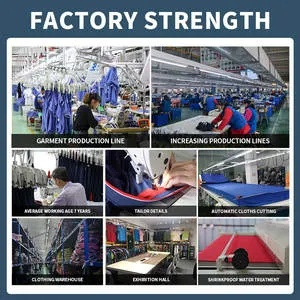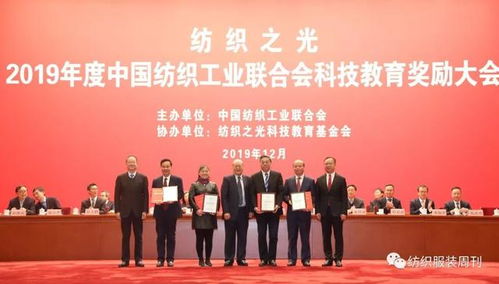The Fabric of Our Future:Environmental Impacts in the Textile Industry
The textile industry, a vital sector in the global economy, has significant environmental impacts that require attention. The use of synthetic fibers and dyes in textile production can lead to water pollution, air pollution, and soil contamination. Additionally, the energy consumption during the manufacturing process is high, contributing to greenhouse gas emissions. To mitigate these issues, sustainable practices such as using natural fibers, reducing water usage, and minimizing energy consumption are essential. The adoption of eco-friendly technologies and policies can also help reduce the negative environmental impacts of the textile industry. Ultimately, it is crucial for stakeholders to collaborate and implement measures to promote sustainability in the textile industry.
Introduction: The textile industry is one of the world’s largest and most complex industries, responsible for producing a vast array of fabrics and materials used in everyday life. However, this sector also has a significant environmental footprint, with water pollution, air pollution, waste management issues, and energy consumption being some of the major concerns. In this article, we will explore the various environmental impacts faced by the textile industry and how they can be mitigated to create a more sustainable future.
Water Pollution: Textile production involves extensive use of water, both for washing and dyeing processes. This results in a significant amount of water pollution, which not only affects the quality of water resources but also poses health risks to local communities. According to a study by the World Wildlife Fund (WWF), textile production accounts for up to 20% of global freshwater withdrawals, contributing to water scarcity in many parts of the world.

To address this issue, manufacturers are adopting more sustainable practices such as rainwater harvesting, greywater recycling, and using low-flow fixtures in their factories. Additionally, governments are implementing policies to regulate textile wastewater discharge and encourage the use of eco-friendly chemicals.
Air Pollution: Textile manufacturing generates significant amounts of air pollutants, including particulate matter, nitrogen oxides, and volatile organic compounds (VOCs). These pollutants can lead to respiratory problems, heart disease, and other health issues for workers and residents living near textile mills.
To reduce air pollution, textile companies are implementing measures such as reducing energy consumption through energy-efficient machinery, improving ventilation systems, and using renewable energy sources like solar power. They are also promoting the use of eco-friendly dyes and chemicals that produce fewer emissions.
Waste Management: Textile waste management is another area where the industry faces challenges. Manufacturers generate a large amount of waste, including textile scraps, dye sludge, and excess water. This waste needs to be disposed of properly to prevent environmental harm.
In response to this issue, textile companies are investing in recycling programs, composting facilities, and other waste reduction strategies. They are also exploring the use of biodegradable materials and designing products with recyclable components to minimize waste.
Energy Consumption: Textile manufacturing requires significant energy inputs, especially in the form of electricity for machinery and heat for processing. This energy consumption contributes to greenhouse gas emissions, which are a major contributor to climate change.
To reduce energy consumption, textile companies are adopting more efficient technologies such as automated machines, smart sensors, and predictive maintenance. They are also exploring alternative energy sources like wind and solar power to supplement their conventional energy needs.
Case Study: One example of a textile company that has made significant strides in reducing its environmental impact is Patagonia. The company was founded in 1973 by Yvon Chouinard and is known for its commitment to sustainability and ethical manufacturing practices. Patagonia uses recycled materials in its clothing and accessories, implements energy-efficient lighting and HVAC systems, and has a zero-waste policy for its factories.
Patagonia's efforts have led to a positive impact on the environment, as well as a positive brand image among consumers who value sustainability. By taking a proactive approach to sustainability, Patagonia has become a model for other textile companies looking to reduce their environmental footprint.
Conclusion: The textile industry has a significant impact on the environment, from water pollution to air pollution, waste management, and energy consumption. However, there are ways for the industry to reduce its environmental footprint and create a more sustainable future. By adopting more sustainable practices, implementing innovative technologies, and working together with stakeholders, textile companies can make a meaningful contribution to preserving our planet for generations to come.
随着全球经济的快速发展,纺织品行业作为国民经济的重要支柱产业,其发展环境也发生了深刻的变化,本篇文章将围绕纺织品行业环境展开讨论,通过图表和案例分析,为您呈现一个全面的视角。
纺织品行业现状
-
市场需求增长 近年来,随着人们生活水平的提高和消费观念的转变,纺织品行业市场需求持续增长,消费者对高品质、环保、时尚的纺织品需求日益旺盛。
-
竞争格局 纺织品行业市场竞争激烈,国内外品牌众多,产品同质化现象严重,为了在竞争中脱颖而出,企业需要不断创新,提高产品质量和附加值。

环境因素分析
-
政策环境 近年来,各国政府对纺织品行业的政策环境不断优化,鼓励企业创新发展,一些国家出台了支持纺织企业技术改造、提高产品质量的相关政策。
-
经济环境 全球经济形势对纺织品行业的影响不可忽视,国际贸易保护主义抬头,纺织品出口面临挑战,国内纺织行业转型升级的需求日益迫切。
-
技术环境 随着科技的不断进步,纺织品行业的技术环境也在不断改善,新型纤维材料的出现和应用,提高了纺织品的性能和品质,数字化、智能化等技术的应用也为纺织品行业的发展提供了新的机遇。
案例分析
以某知名纺织品企业为例,介绍其在纺织品行业环境中的成功案例。
-
产品创新 该企业注重产品创新,不断推出新品种、新款式的高品质纺织品,通过与科研机构合作,引进新技术、新工艺,提高了产品的附加值和竞争力。
-
绿色环保 该企业在生产过程中注重环保,采用环保材料和技术,减少污染排放,积极推广绿色生产理念,提高消费者的环保意识。
-
品牌建设 该企业注重品牌建设,不断提升品牌知名度和美誉度,通过参加国内外展览、参加国际品牌活动等方式,提高品牌影响力,积极开展线上线下营销活动,提高销售额。
-
市场趋势 未来纺织品行业市场趋势将更加多元化和个性化,高品质、环保、时尚的纺织品将成为消费者的首选,功能性纺织品、绿色纺织品等新兴市场也将逐渐兴起。
-
政策环境 未来政府将继续优化纺织品行业的政策环境,鼓励企业创新发展,也将加强对纺织品的环保监管和质量控制,推动行业转型升级。
-
技术环境 未来纺织品行业将继续受益于科技的不断进步,新型纤维材料的出现和应用将进一步推动纺织品行业的发展,数字化、智能化等技术的应用也将为纺织品行业的发展提供新的机遇。
纺织品行业环境是一个复杂而多变的环境,企业需要不断创新,提高产品质量和附加值;也需要关注政策环境、经济环境和技术环境的变化,积极应对挑战,抓住机遇,纺织品行业将继续保持快速发展态势,为国民经济的发展做出更大的贡献。
Articles related to the knowledge points of this article:
Strategies for Degrading Formaldehyde in Textile Products
Textile Order Filing Template for Business Operations
An Extensive Guide to Printed Textiles:Types,Uses,and Case Studies
A Journey into the World of Fabrics with Laughing Leaf Textiles
Blue Dream Textiles:A Journey Through Quality and Innovation
Exploring the Art of Salt Texture in Home Textiles:An Idealized Journey



